TWIN SYSTEM
Powerful and fault-tolerant sensor-actuator-system
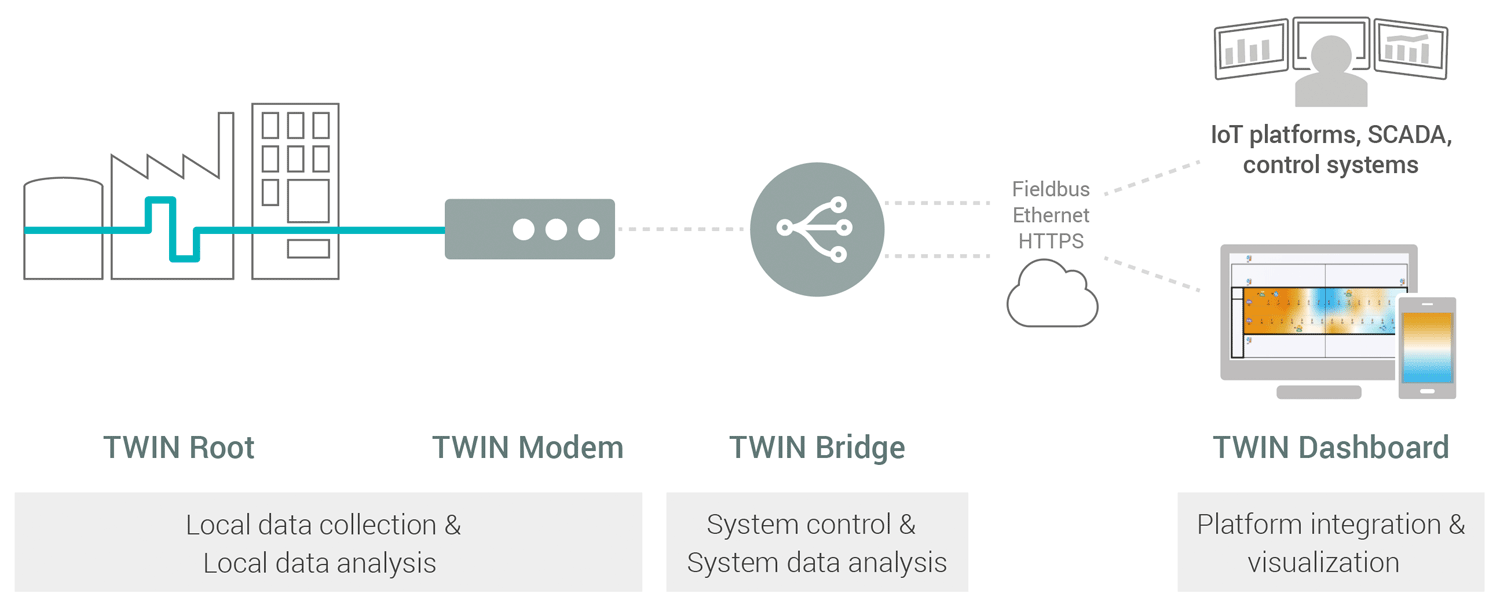
Powerful and fault-tolerant sensor-actuator-system

TWIN is specially designed for monitoring assets of up to 10km² and can withstand harsh environmental conditions. Among TWIN’s exciting features are:
To these powerful features, add reliability and quality resulting from industrial production methods. TWIN
systems are easy to document, maintain, extend and repair.
Furthermore, the system has complete remote configuration and maintenance capabilities.
TWIN is a game changer, enabling solutions for many problems, which are infeasible with conventional
technology.
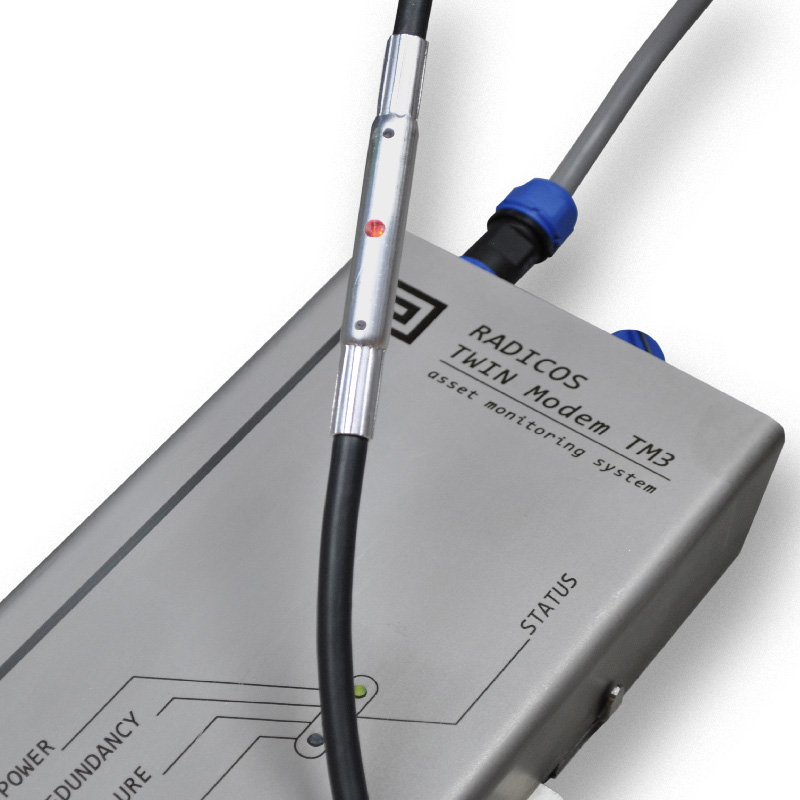
TWIN consists of the TWIN Root connecting hundreds of TWIN Nodes (sensor-actuator nodes) with a TWIN Modem (local analysis and alarming unit). The TWIN Bridge interfaces with local or remote networks and automation systems and optionally with the TWIN Dashboard.
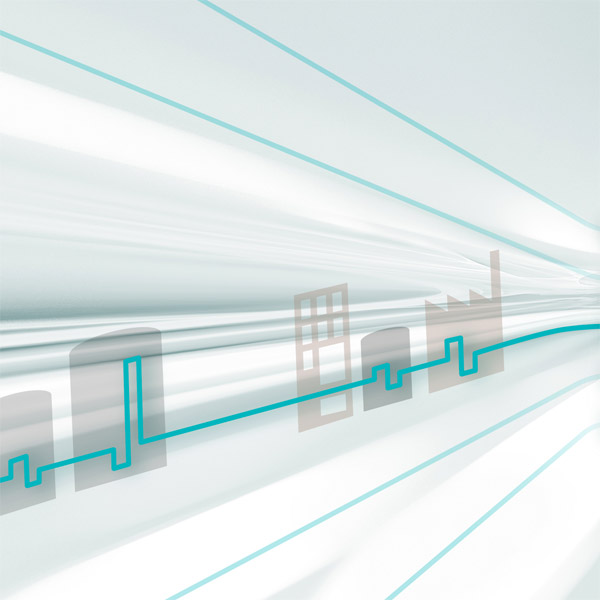
The TWIN Root's medium for power and data transmission is the simplest conceivable cable, a twisted pair. It is optimized for harsh environments:
According to other application requirements, the cable characteristics can be changed.
On one TWIN Root
hundreds of TWIN nodes can be integrated.
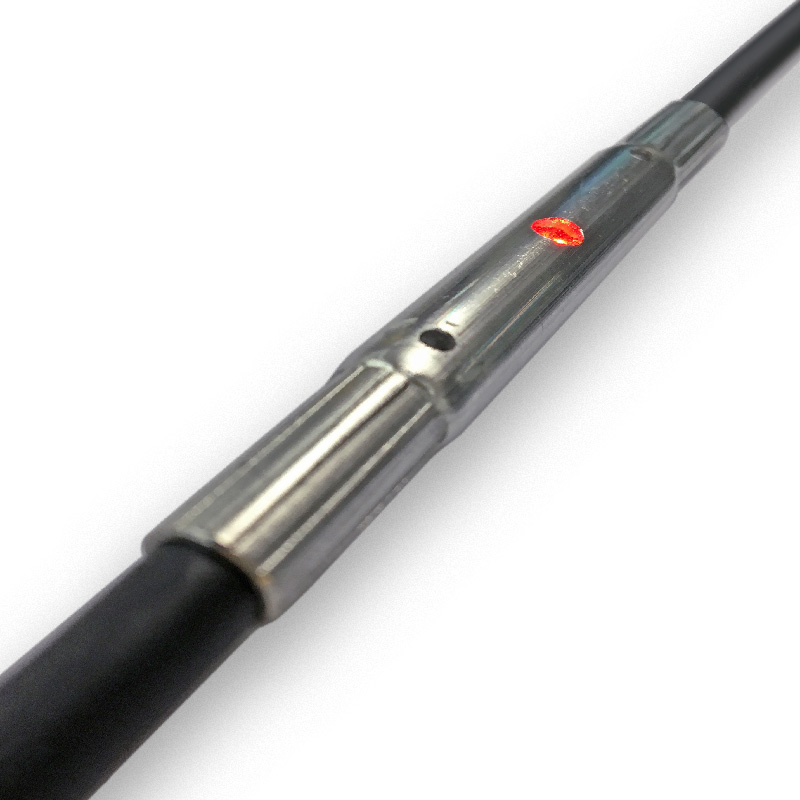
The TWIN Node is the key part of the TWIN technology: It is a sensor-actuator node which provides a data output function via a programmable LED able to command a relay; and it interfaces the sensor type of your desire through:
We currently provide TN with sensors for temperature, humidity, CO2, NH3, H2S, vibration, and proximity measurements. Up to 3 sensors may be attached to one node.
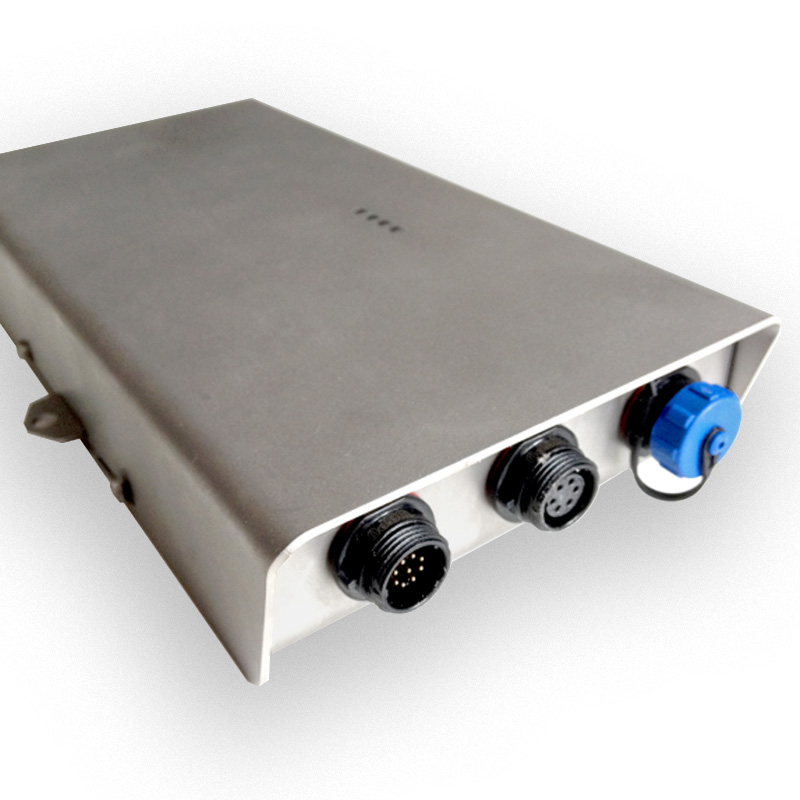
The TWIN Modem is located at the head of the TWIN Root and addresses the TN. The patented addressing method between TN and TM is the core of the TWIN technology, and provides unsurpassed and uncompromised fault-tolerance by design.

The TWIN Bridge is a software that serves 3 main purposes:
The TWIN Bridge is a cross-platform program (Linux, Windows) and runs on different computer types, from
single board computers to industrial computers.
In our native configuration we operate the TWIN Bridge on a Raspberry Pi, connected to the TM via RS485
interface. Our preferred protocol for the upward interface to your platform is https/JSON.
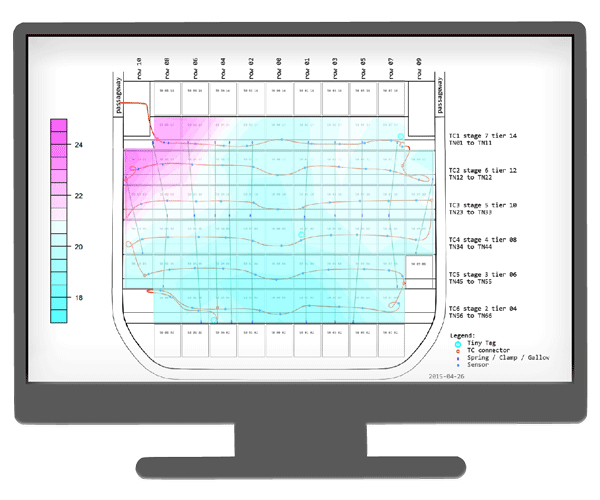
The TWIN Dashboard is a powerful web-based platform for data visualization and analysis. It is viewed in a web browser and based on the open-source solution Grafana.
To visualize the current sensor data at a glance, we offer live-heatmaps: They are an intuitive way to grasp at a glance what is going on. This is equally important for regular operation with non-trained personnel as for emergencies where time is of major importance.
To visualize sensor data time-series, users may configure their own custom-tailored dashboards representing specific sensor data over freely selectable timeframes. It supports graphs, tables, the summary of statistics, gauges as well as integration with dozens of plugins for data visualization panels, external data sources and apps.
In a TWIN System under one TWIN Bridge up to 32 TWIN Modems with 1 TWIN Root each may be deployed. Such
architecture results in thousands of sensors and actuators mastered centrally by the TWIN Bridge.
The
TWIN Bridge itself may be controlled remotely by the operator´s platform (SCADA, etc.).
Note that the latency and analysis cadence for every TWIN Root may be optimized and adapted to the
application.
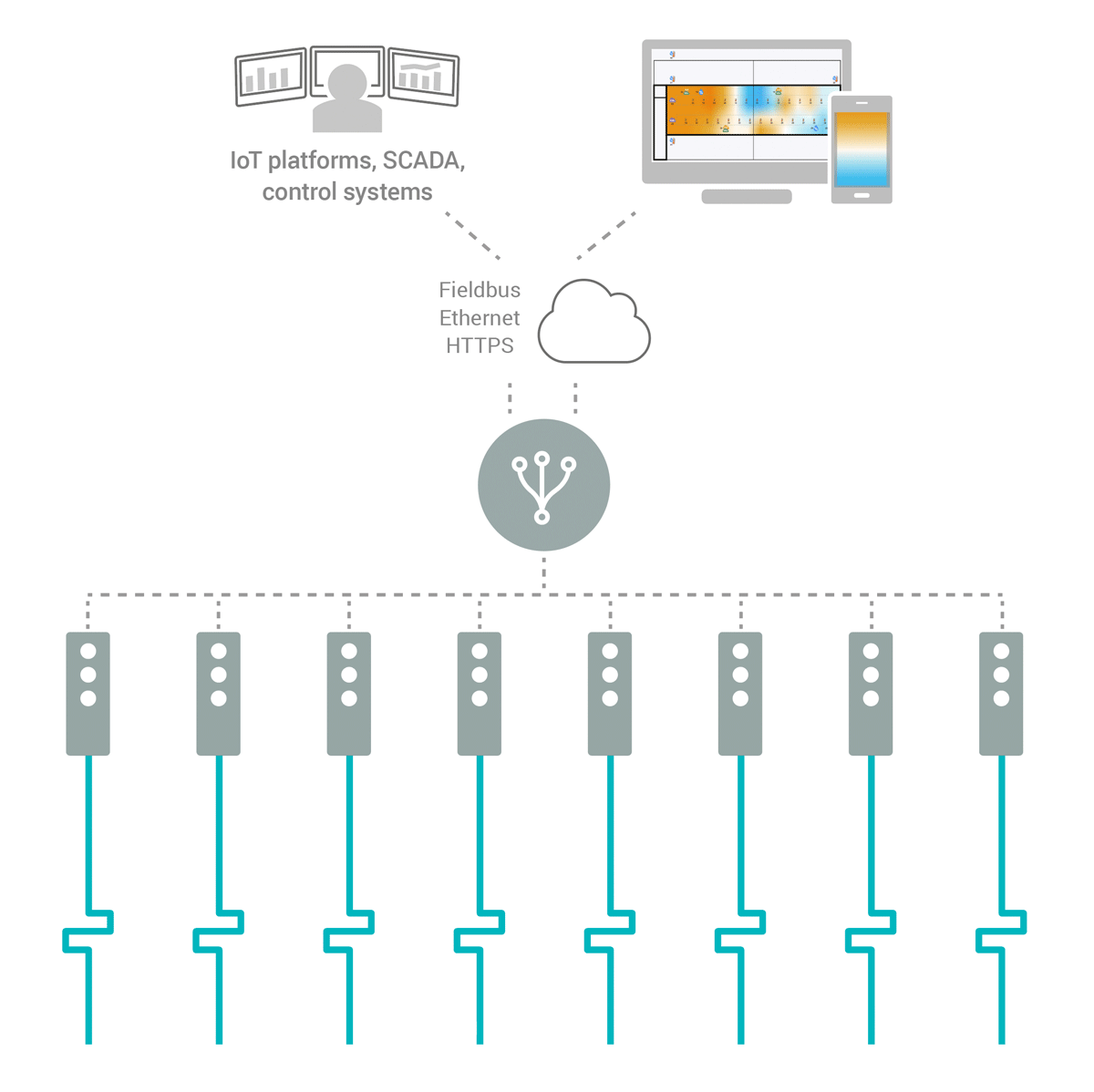
This sensor operates between - 40°C and +105°C with a resolution of ±0.025°K. The node is integrated in the cable and encapsulated under a protective sea-water resistant hull (conforming to ATEX zone 1).
The CO2Sensor is based on the NDIR measurement principle (Non-Dispersive Infrared principle) and measures between 300 to 5,000 ppm with an accuracy of ±50 ppm (3% of value).
The NH3 sensor is an electrochemical sensor and measures with a resolution of ±1 ppm in a range from 0 to 100 ppm.
The H2S sensor is an electrochemical sensor and measures with a resolution of ±0.1 ppm in a range from 0 to 100 ppm.
The humidity sensor operates in a range from 0% to 100% rH and measures with a resolution of ±0.01% rH.
The vibration sensor is an omnidirectional tilt and vibration sensor with a minimum sensitivity of 0.2 to 0.6g.
The proximity sensor is an industrial grade inductive sensor with a measurement distance of 8mm.